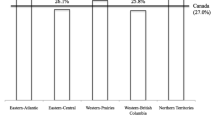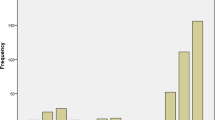Abstract
This investigation analyzed social and demographic characteristics of women having an unwanted or mistimed pregnancy (unintended pregnancies at the current time) in South America.
A sample of 5135 women having had a normal non-malformed live-born infant were interviewed immediately postpartum at 18 hospitals participating in the Latin American Collaborative Study of Congenital Malformations (Spanish acronym: ECLAMC). Half (2568/5135 = 50%) reported that their pregnancies had been unintended, and, of those, 59.3% (1522/2568 = 59.3%) declared that they were trying to avoid conception. The latter group (n = 1522) was the main sample for this study.
Patients were asked about their knowledge of when during the menstrual cycle conception is most likely to occur, their biomedical and social characteristics, the type of contraceptive methods used, their opinion of reasons for contraceptive failure, and their reasons for not using contraceptive methods.
Women with unintended pregnancies who had not attempted to avoid conception were younger, often primigravid, less educated, and less knowledgeable concerning when during the cycle pregnancy is most likely to occur. Thus, reproductive health policies should be aimed at this target group.
Similar content being viewed by others
References
Rosenberg MJ, Waugh MS, Long S. Unintended pregnancies and use, misuse, and discontinuation of oral contraceptives. J Reprod Med. 1995;40:355-60.
Rosenberg MJ, Waugh MS, Meehan TE. Use and misuse of oral contraceptives. Risk indicators for poor pill-taking and discontinuation. Contraception. 1995;51:283-8.
Brown SS, Eisenberg L. Contraceptive knowledge and access in the best intentions. Inst Med. 1995;5:129.
Adams MM, Bruce FC, Shulman HB. Pregnancy planning and pre-conception counseling. The PRAMS working group. Obstet Gynecol. 1993;82:955-9.
Gadow EC, Paz JE, López-Camelo JS et al. Unintended pregnancies in women delivering at 18 South American hospitals. Hum Reprod. 1998;13:1991-5.
Jones EF, Forrest JD, Henshaw SK, Silverman J, Torres A. Unintended pregnancy, contraceptive practice and family planning services in developed countries. Fam Plann Perspect. 1988;20:53-67.
Forrest JD. Epidemiology of unintended pregnancy and contraceptive use. Am J Obstet Gynecol. 1994;170:1485-9.
Kastner LS. Ecological factors predicting adolescent contraceptive use: implication for interventions. J Adolesc Health. 1984;S(2):79-86.
Price SJ, Barret G, Smith C. Use of contraception in women who present for termination of pregnancy in Inner London. Public Health. 1997;111:377-82.
Kohler HP. Learning in social networks and contraceptive choice. Demography. 1997;34:369-83.
Huerta Franco R, Díaz de León J, Malacara JM. Knowledge and attitudes toward sexuality in adolescents and their association with the family and other factors. Adolescence. 1996;31:179-91.
Putter RL. Family planning issues relating to maternal and infant mortality in the United States. Bull Pan Am Health Org. 1993;27:120-34.
Harlap S, Kost K, Forrest JD. Preventing Pregnancies. Protecting Health: A Look at Birth Control in the United States. New York. The Alan Guttmacher Institute; 1991.
Forrest JD, Singh S. The sexual and reproductive behavior of American women, 1982–1988. Fam Plann Perspect. 1990;22:206-214.
Grimes DA. The morbidity and mortality of pregnancy: still risky business. Am J Obstet Gynecol. 1994;170:1489-94.
Wessel H, Cnattingius S, Bergstroms. Maternal risk factors for preterm birth weight in Cape Verde. Acta Obstet Gynecol Scand. 1996;75:360-6.
Fraser AM, Brockert JE, Wark H. Association of young maternal age with adverse reproductive outcomes. N Engl J Med. 1995;332:1113-17.
Dollberg S, Seidman DS, Armon Y. Adverse perinatal outcome in the older primipara. J Perinatol. 1996;16:93-7.
Kirby O, Short L, Collins J et al. School-based programs to reduce sexual risk behaviors. A review of effectiveness. Public Health Rep. 1994;109:339-60.
Brown SS, Eisenberg L, eds. for the Institute of Medicine (US) Committee on Unintended Pregnancy. The Best Intentions: Conclusions and Recommendations. Washington DC: National Academy Press. 1995:250-71.
Author information
Authors and Affiliations
Rights and permissions
About this article
Cite this article
Gadow, E., Jennings, V., López-Camelo, J. et al. Knowledge of likely time of ovulation and contraceptive use in unintended pregnancies. Advances in Contraception 15, 109–118 (1999). https://doi.org/10.1023/A:1006793509084
Issue Date:
DOI: https://doi.org/10.1023/A:1006793509084




